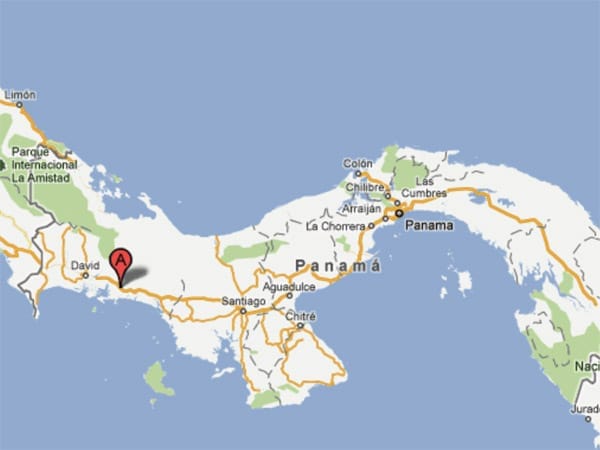Last year, on these same dates, the government elaborated and approved the Law 8, which, aside from regulating the taxes imposed to mining companies, affected the existing or future concessions to miners in the area of Ngäbe-Buglé. This led the indigenous people to block the Inter-American road in distinct points between Santiago and David. The Coordinator for the Defense of Natural Resources and the Rights of Ngäbe, Buglé and Campesino people, sought the mediation of the Catholic Church in the person of his servant, which was accepted as well by the government. Thus, since February 27, in San Felix at the Centro de Capacitación y Formación “ Nuestra Señora del Camino,” the “roundtable” was created and the document presented by the Coordinator and counter-proposals of the Government were analyzed, until March 3, when the President of the Republic, Ricardo Martinelli, being present, announced the derogation of the Law 8 and agreed to form a tripartite commission- the Coordinator, the Executive, the Congress- which would elaborate a new law that ought to suspend and prohibit mining exploitations in that area and to protect the water and environmental resources of the same.
Neither mines, nor hydroelectric power plants
With less haste than what is necessary and prudent, the said commission did not arrived at studying and establishing an accord until the end of October. In the project of agreement, the Coordinator put forward eleven points. Three of which were rejected by the Commission, because there were already contained somehow in the preceding numbers. Both by consensus, eight were approved and one was not. When the Commission on Trade and Economic Affairs of the Assembly presented the draft of the Law to the Plenary Assembly, only the approved eight points were included, without number five, which was not approved. Point number 5, in summary, prohibits not only mining concessions within that circumscription, but the construction of hydroelectric power plants as well, and this point extends this prohibition to the so-called “annexed area,” including the areas outside the circumscription, where the indigenous people live. The government was not so much amenable to it.
And the conflict broke out again. The Coordinator moved once more for the closure of the inter-American road. At first, only one lane was blocked to show force, and, then, taking into consideration the refusal of the government, they put up a total blockage. This lasted for 6 days. On Thursday, first attempts to dialogue started to take place, putting the Church as intermediary, through his servant. They said that the Executive, for the sake of state security, ordered the disconnection of mobile communications in the area. On Friday, in search for dialogue, a government commission composed of the Ministries of Administration and Commerce and two deputies went to David; it was considered imprudent to travel at the point of conflict and the indigenous people neither wanted to move out of their place. The government team returned to the capital in the afternoon, but another avenue of dialogue was opened through the Ministry of Education, with which a meeting of both parties was set on Saturday at 10 o’clock AM; this time, I do not know for what reason, the government did not make any move and they kept us waiting until 3:00 PM, both the Church and the Coordinator.
SMS at dawn
On the evening of Saturday, knowing that things were nearing their limits, conversations through the phone between the Executive, the Church, and the Coordinator, were intensified. After many twists and turns, at almost 1:00 AM, an accord was reached with the leaders of the Coordinator, agreeing to open the road at 6:00 am and the talks in San Lorenzo would commence by 7:00 am. With that decision, I went to bed to have a rest for few hours so as to go early to San Lorenzo, about 50 km from David. When I got up at 4:30 am, after I wash up, I got my phone, with an SMS from Father Adonai, parish priest of San Felix, which came at 3:00 am. He informed me that when the leadership of the indigenous people replied on the basis of the agreement, they said “ñagare” (“no”), we will not take out the blockage, because this is our assurance that the government would take things seriously. Pulling myself together, at 5:30 am, I communicated the decision to the government, knowing that the worst had come. Thus, at 6:00 am security forces entered through various points to dislodge the path. As a result, one died, many were wounded and detained and multiple allegations of violations against indigenous girls made by the police were reported.
Accord and Dialogue
Further telephone calls were made on Monday, and on Tuesday the “roundtable” was initiated in San Lorenzo, trying to reach the “Acuerdo de San Lorenzo” At this time, both parties are dialoguing in the Assembly of Deputies, with the mediation of the Catholic Church, and the presence of the Rector of the University of Panama and the Reporter from the United Nations in Panama. May the Lord of life and history, through the intercession of “Santa María La Antigua” illumine us in order to reach an agreement that would bring back peace to the country and would open to the indigenous people windows of hope and trust.


